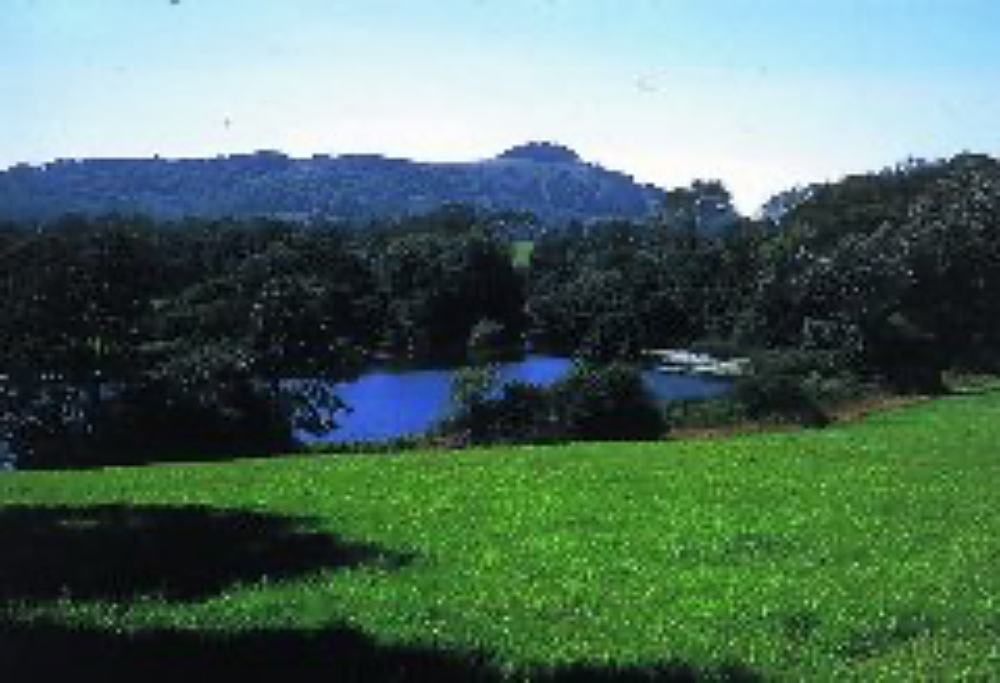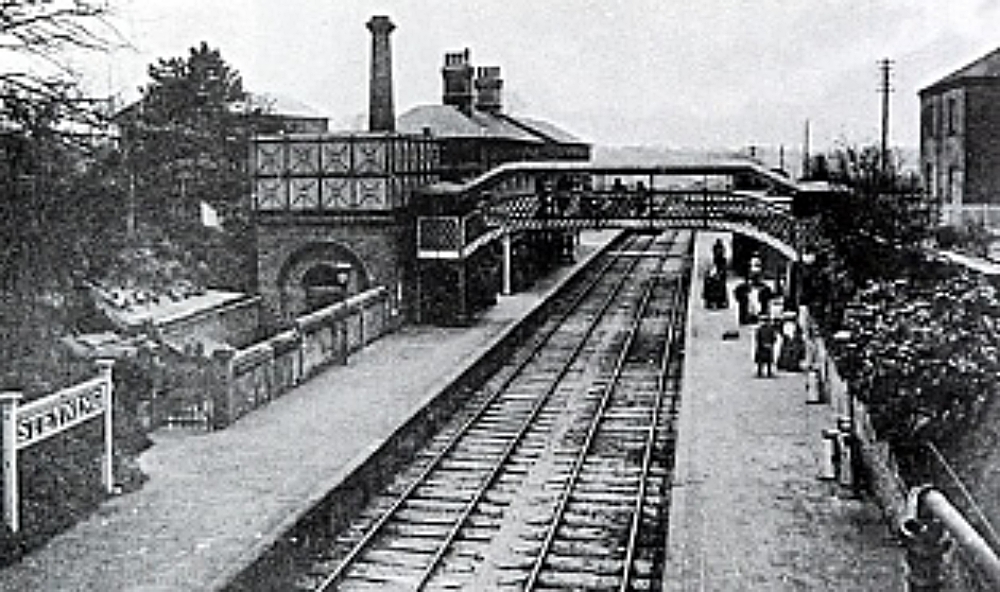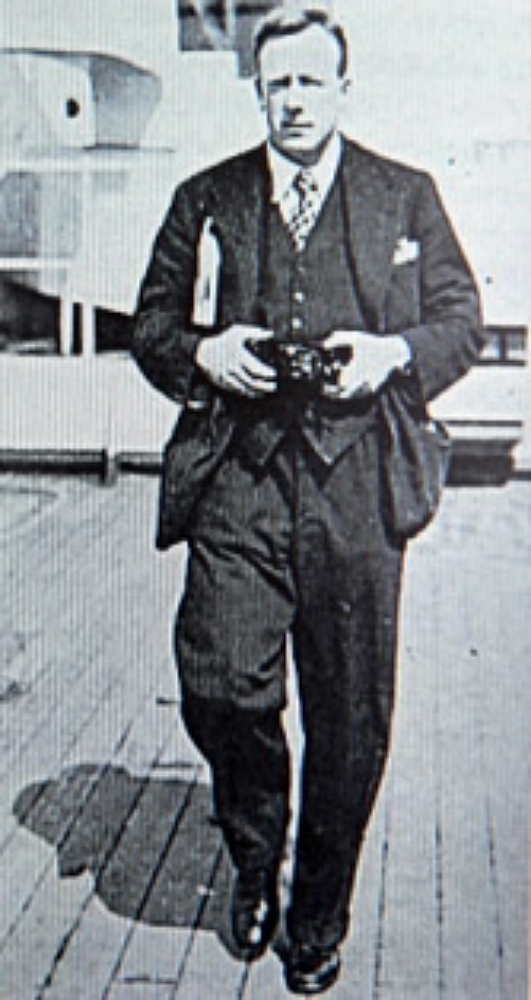The Incredible Journey
THREE Southern Railway “specials” steamed and puffed their way down the Adur Valley from Horsham in the chilly, early hours of July 17, 1932.

Not, as one might have expected, with a handful of weary travellers on board but with no fewer than 1,300 eager, wide-awake passengers anticipating an exciting adventure.
It was between 2am and 3am that the packed night excursion trains pulled into sleepy Steyning station and the silence of the village was broken by the noisy disembarking of a truly motley crowd.
As Freddie Feest recalls, it was hardly surprising that the handful of locals who witnessed this “alarming happening” at such an unearthly hour were quick to label the new arrivals as “lunatics”.
THE 1,300 so-called “lunatics” had begun their journey from London shortly after midnight – a time when, in the usual course of events, all right-minded 1930s folk would be found in bed.
And the object of their journey? To watch the sun rise from the top of Chanctonbury Ring, overlooking the village of Washington.
As one incredulous observer commented: “Such a performance can be witnessed free of charge 365 times a year with an extra matinée every fourth year. Are these people mad?”
“For close on an hour,” said a witness of the phenomena, “I stood outside Steyning railway station watching the crowd decant themselves into the night. The procession seemed endless. As the minutes went by, I began to wonder if I was being duped into watching a continuing roundabout …”
Later, the same man was to recall: “It was a strangely mixed crowd, mainly young people aged between 20 and 25. Yet they also included a businessman in an overcoat and bowler hat, with a suitcase in his hand, a person carrying a rucksack barely large enough to hold a handkerchief and another lugging a full camping outfit and enough food for an army.
“There was a group of girls in shorts and khaki shorts, an undergraduate, a typist, a man who looked like a mechanic and several Boy Scouts.”
The journey made by the undaunted 1,300 was, according to another onlooker, “a sign of mid-1930s revolt among young people”. But he found hope in two older people walking silently together when he heard them whisper: “Don’t tell the children. They’ll think we’re mad.”
If the three trainloads who had escaped from London were “lunatics”, then the arch lunatic was SPB Mais, author, broadcaster and known to many as the “Ambassador of the British countryside”.
Stuart Petre Brodie Mais was also a railway buff, so it was not surprising that although he lived in Southwick, he had travelled in one of the steam trains from London.
He led the straggling column of mixed humanity from Steyning station towards the Downs, carrying both a hat and cap in one hand and an overcoat over the other arm.
At no time during the long walk was he seen to wear any of them!

In the train on which he travelled, he visited every compartment and made friends with more than 400 people.
During the walk to Chanctonbury Ring, he hurried backwards and forwards like a sheepdog.
“How are you enjoying it?” he barked to one. “Is that pack comfortable?” to another. “Listen to that lark. First time I’ve heard one at quarter-past four in the morning,” to a third.
One contemporary newspaper reporter, describing the trek, was struck with its resemblance to “St Augustine and his monks arriving at Canterbury”.
By the time the young “pilgrims” reached Chanctonbury Ring, they were hungry. They sat down around the summit, topped by its famous ring of trees, and began to eat their sandwiches. An enterprising man arrived with a cart and did a roaring trade with refreshments.
Several small tents appeared, their owners pegging them out just as the first small yellow rent of sun appeared low in the great black curtain of cloud to the east. As the yellow spread, it turned to a faint rose colour.
Daybreak had come and with it a dawn wind blowing keen from the north east. As the light increased, the glamour of the scene slowly died.
The adventurers of overnight looked at one another and realised they were suddenly sleepy and tired, chilly and still hungry.
Then began the great retreat from Chanctonbury. A few bold souls struck out for Findon, Worthing and Shoreham, but the majority turned back towards Steyning, breakfast and the train.
Did the trek to Chanctonbury Ring really have any relevance at a time when Hitler was conspiring to take over Germany, England was in crisis having just devalued the pound, the whipping of children under the age of 14 was only just being abolished as a corporal punishment and crowds of unemployed were clashing with police in the streets of London?

SPB Mais, self-styled Ambassador to the Downs and champion of British idiosyncrasy, strongly contested the assertion that the 1,300 early-morning walkers were “lunatics”.
“If lunacy means casting off that conventionality which muffles up the body, clogs the brain and stifles the soul,” he said, “then I can find no more appropriate comment than the words of George III on being told that General Wolfe, victor over the French on the Heights of Abraham at Quebec, was mad.
“If that man be mad,” observed the king, “I wish he would bite some of my other generals.”
FOOTNOTE: SPB Mais was an ardent campaigner for the British countryside and its traditions. From his beloved home in Southwick, he became a prolific author, journalist and broadcaster, writing more than 200 books, leading even Winston Churchill to joke: “The speed of his output makes me feel tired.”Although a “duffer” at cricket, Mais was a staunch supporter of Southwick Cricket Club and to his considerable cost became embroiled in a bitter struggle with the council over the right of the cricket club to play their matches on the village green.He was broad-minded and innovative and in 1933, years before Alistair Cooke came on the scene, he began the groundbreaking series of broadcasts for the BBC, entitled “Letter from America”.